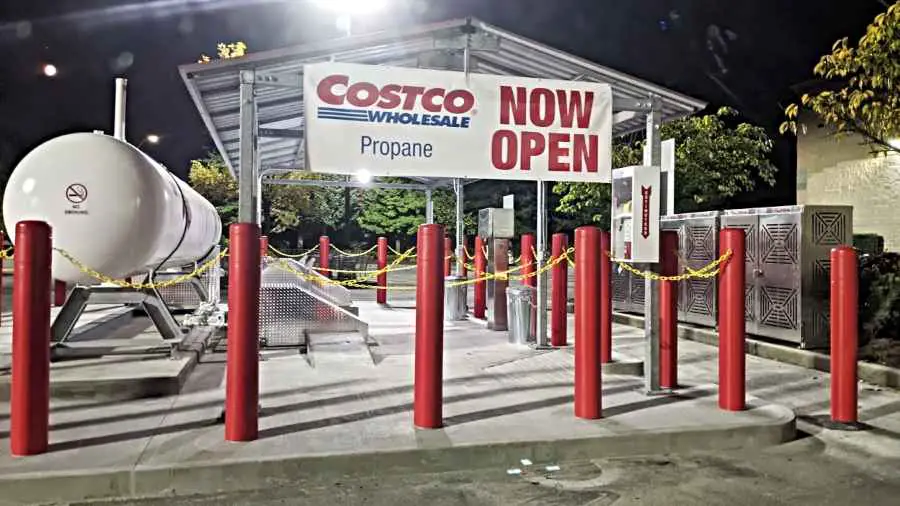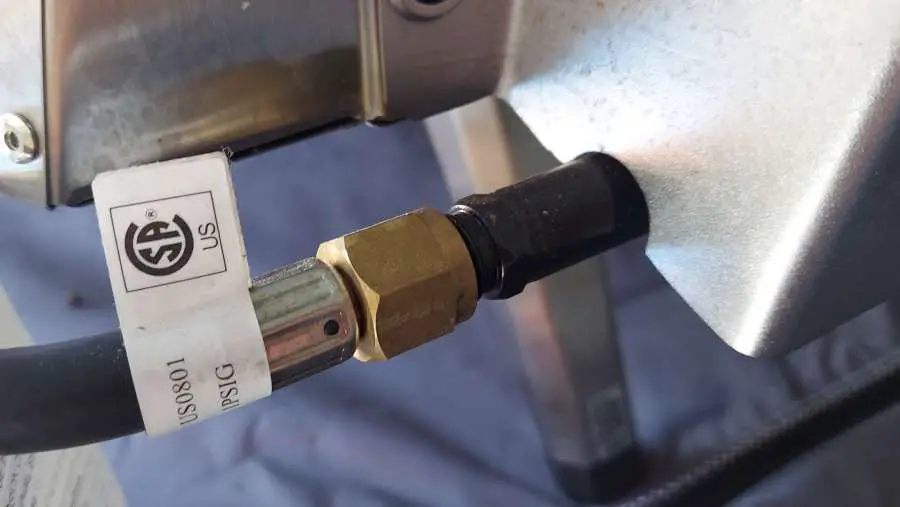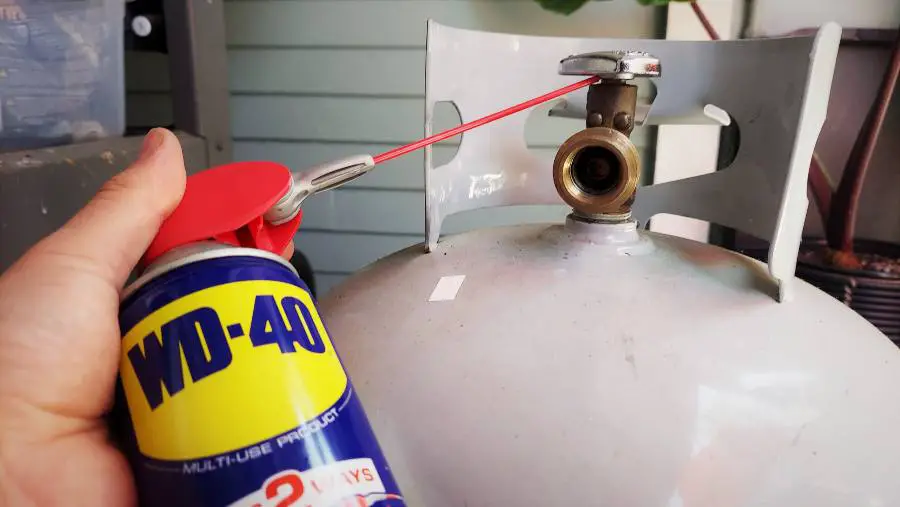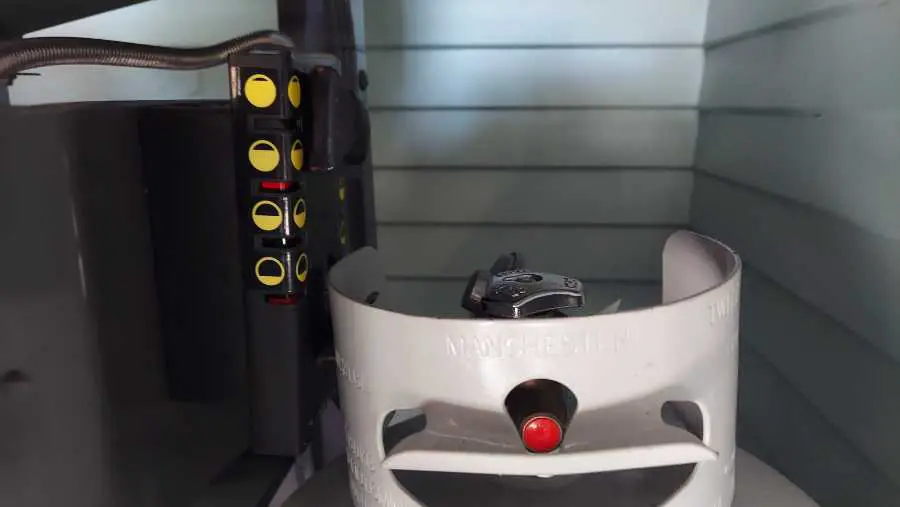Last Updated on June 21, 2024 by Dan Campbell
Are you hearing a hissing noise when your propane tank is connected? Worried you might have a propane leak? Let’s go over how to determine the cause of your propane tank hissing and how to fix the issue.
If you hear a hissing noise coming from your propane tank, it could be a sign of a leak, normal operation, or an over-pressurized tank. It’s important to figure out what the cause is as you do not want to assume everything is okay when you could potentially have a leak or over-pressurized tank, possibly leading to a dangerous situation. It can be normal to hear a slight hissing noise from your propane tank, as long as you do not smell gas. If you hear a loud hissing noise and also smell gas, you have a propane leak.
Let’s go over what is normal to hear, what causes a propane tank to hiss, how to fix it, and what to do if the hissing or humming noise continues.
Is It Normal To Hear Hissing From A Propane Tank?
With some appliances, depending on the BTU output, it may be normal to hear a slight hissing or humming noise coming from the propane tank. However, for the most part, you should not hear any hissing noise coming from your propane tank.
What Causes a Propane Tank to Hiss
The main reason you will hear a hissing noise coming from your propane tank is that there is a large volume of propane flowing through the valve and regulator. This may be normal, or it could be a sign of a leak, the safety relief valve has opened, or the bleeder valve wasn’t properly closed. Below is a picture of a propane tank connected to a regulator with a hose attached, most likely the hissing noise you hear will be coming from one of these locations.

Let’s go over the various possibilities, starting with what normal sounds you might hear from your propane tank.
Normal Propane Tank Sounds
Some of the sounds you might hear during normal operation are a slight humming noise, which is the propane moving through the hoses, regulator, and appliance burners. You may also hear the sound of propane hissing when you first connect a hose, or when you disconnect the hose. This is normal and should not worry you. When disconnecting the hose, you may also smell propane and hear a quick swooshing sound which is also normal.
When you first turn on your propane tank that is connected to an appliance, you may also hear a “clicking” sound. This is your regulator moving, which is normal. Because the regulator works by allowing a specific pressure of propane to pass around a diaphragm, it can sometimes make a wobbling or pulsating noise.
If however, you hear a clicking sound and are also experiencing a low flow of propane or issues starting your appliance, you may have accidentally triggered the low-flow safety feature. Read how to reset your regulator below.
When moving your propane tank around, you may hear a swishing noise, this is because the propane inside your tank is a liquid.
To ensure the sound is not being caused by a leak, you should test for a possible leak at one of the connections to your propane tank and appliance. Let’s go over how to test for that.
Testing Your Propane Tank For A Leak
While a slight hissing noise may be normal, what you do not want to hear is a continuous hissing noise when the connected appliance is turned off. You also do not want to smell any gas. Because propane is odorless, a chemical that smells like rotten eggs is added to help detect leaks. If you hear a hissing noise accompanied by a strong smell of rotten eggs you have a propane leak and need to immediately fix this. Check out my article “How To Check for a Propane Tank Leak and What to Do” to learn more about detecting leaks and what to do in further detail.
To test for a propane leak, first, make sure all connections to the propane tank are tightened and that you do not smell any gas. Make sure when tightening the regulator to your propane tank you hand tighten and never use a tool to tighten the connection, as you can accidentally overtighten it or break an O-ring.
While smelling for propane is one way, the best option is to use a gas detector.
Using A Gas Detector
To test for a leak you can use a handheld gas detector or a bubble-forming spray that helps detect propane leaks like this Camco gas-detecting spray on Amazon. You can also use a mixture of water and dish soap, however, the specialty sprays work a lot better. Spray onto any connections as well as around the valve and look for signs of bubbles forming.
You should always perform this when connecting a new appliance, and you should perform this when the connection is complete and the appliance and propane tank are both off. It’s also good to test this once the appliance and propane tank are on and running.
If you see any bubbles you have a leak and need to disconnect your regulator/hose and inspect them. Look for a broken O-ring (small black rubber circle) or other signs of damage to the connection. Reconnect the regulator/hose and test again. If you are still finding a leak you’ll need to have the hose, regulator, or propane tank replaced.
Handheld detectors are great, but I find the spray to be more helpful as you can visually see exactly where there is a leak. But if your connection is hard to reach, or can be difficult to see, a hand-held gas detector like this one from Amazon can be helpful as it has light-up LEDs and an audio alarm that tells you when it detects a leak.
If you’ve ruled out the hissing sound isn’t normal, and you don’t have a leak, let’s go over some of the other possibilities. While these possibilities are a lot less likely, it’s still good to rule these out.
Safety Relief Valve Opens (Over-Pressurized)
If your propane tank is overfilled or is experiencing an over pressurization due to an increase in ambient temperature, the safety relief valve (sometimes referred to as the pressure relief valve) can trigger. When this happens, there will be a steady flow of propane gas coming out of the safety relief valve opening. This is located directly opposite where you typically connect your appliances.
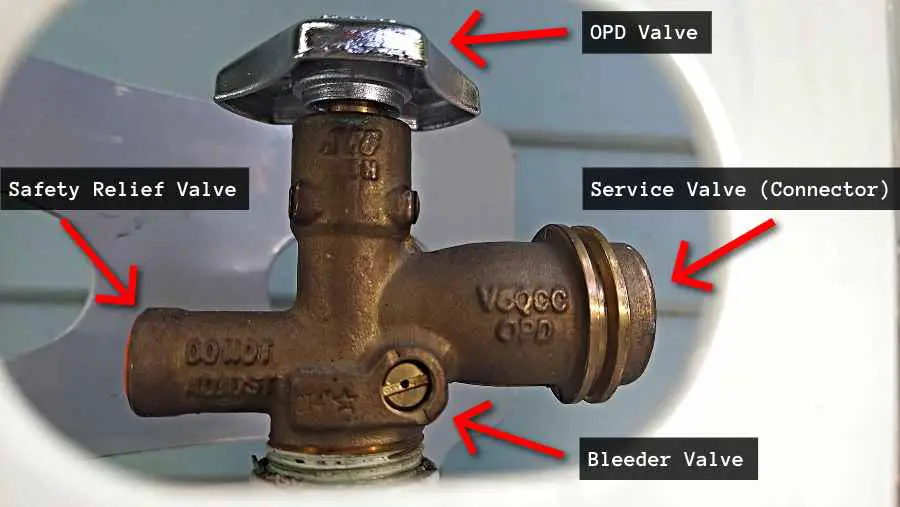
This can create a dangerous situation. If your propane relief valve opens make sure there are no open flames or ignition sources nearby. To help relieve pressure, spray the propane tank with a hose to help cool it down.
Make sure it is not located in a hot location. Once the safety relief valve equalizes pressure, it will close on its own. Never adjust the safety relief valve, or try to close it if it’s open, and never try to look inside the valve opening.
Take a look at this video of a safety relief valve operating after the temperature rose and the tank was overfilled, causing the pressure inside the tank to increase and activate the relief valve.
Bleeder Valve Is Not Tightened Fully
If you had your propane tank refilled instead of exchanged, there is a chance that whoever filled the tank opened the bleeder valve when filling the tank and didnt close it fully when finished. While this is very unlikely, it’s still a possibility. Refer to my photo above of where to locate the bleeder valve on a propane tank.
To determine when a propane tank is full during the filling process, a serviceman may either calculate how much propane to fill by calculating weight, measuring pressure, or by opening the bleeder valve and waiting for excess propane to come out of its relief hole.
If the propane tank was filled this way, there is a chance the bleeder valve was not fully closed after servicing and may need to be tightened. Typically you just need to tighten it with a flat-head screwdriver.
How to Fix a Hissing a propane Tank
As I mentioned above, the cause for a hissing sound is either normal or a potential sign of a leak somewhere. If you’ve tested for a leak and can’t find any, and do not smell propane while hearing the hissing noise, chances are it’s normal.
However, if you detected a leak or you’re smelling gas (a rotten egg smell) you can follow a few simple steps to resolve this.
Reset Your Regulator and Connections
The easiest fix to a hissing propane tank is to just turn everything off and then reconnect everything. Follow the steps below to do so:
- Turn off the appliance and close the propane tank valve fully
- Disconnect the appliance regulator or hose from the propane tank, and inspect the hose or connector for signs of damage. Animals can be attracted to the smell of propane and might have bitten the propane hose, creating a leak.
- Reconnect the regulator/hose to the propane tank
- While the appliance is off, slowly turn the propane tank valve on
- Check for leaks using propane leak-detecting liquid around any connection point
- Turn on the appliance and check for leaks again
Hopefully, this should fix any hissing sound you hear.
Test Another Appliance or Propane Tank
If you’re still getting a hissing noise, try using a different appliance to see if something is wrong with the regulator or hose from that appliance. If you’re in an RV, remove the propane tank from its case and try connecting it directly to a small bbq or burner to test.
You can also check the same appliance with another propane tank if you have a spare available.
If You’re Still Hearing Hissing
Lastly, if you’re still having issues you may need to get a new propane tank as you could have a damaged OPD valve. Contact your local propane supplier about exchanging the tank you have.
If you’re hearing this with an RV or a whole home setup, you may need to reach out to a certified technician to have them review your LP system to rule out any other potential issues. You should have your LP system routinely inspected to ensure there are no leaks and nothing is damaged on an annual basis.
Check out my article on how to dispose of a propane tank for information on how and where to do so, as the answer can vary depending on the size and how you get your propane.
Thanks for reading and God Bless!

